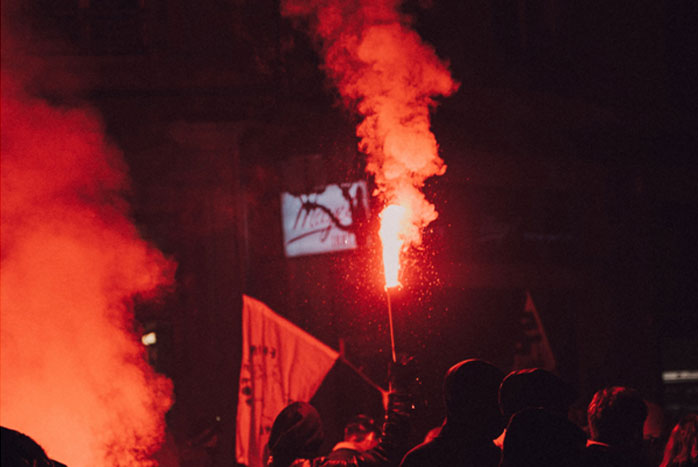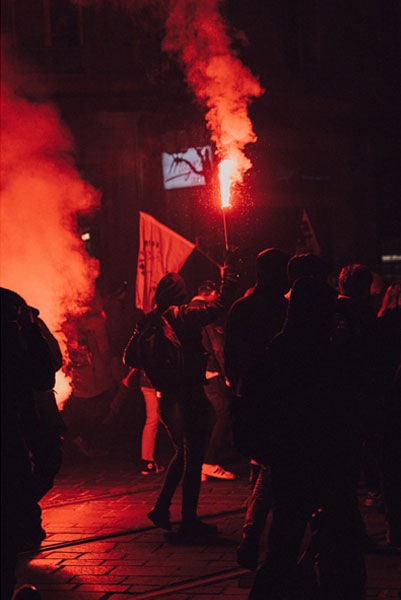

The violence which rampaged North-East Delhi, killed 48 and injured 350 while also extensively damaging property and livelihoods. The carnage that raged between February 24 and 27 is alleged to be an attempt to polarise the working class and mixed population neighbourhoods as well as to suppress and terrorise anti-Citizenship Amendment Act protests.
The demographics of the neighbourhood highlight the extreme vulnerability of the area to political agendas. About 30% of the area is predominated by Muslims.It is also inhabited by a large population of migrant labourers. To exacerbate the susceptibility, the population is young withlower education levels than the rest of Delhi and India. This extrapolates the magnitude of social depravity and discrimination.
The violence that ensued arson, vandalism, assault and stone-pelting, the magnitude of the calamity can be gauged by the fact that about 10,820 distress calls were received by the Delhi police over two days of the violence, or on average 5,410 every day, 225 every hour, and almost four calls every minute.Reports of sexual harassment have also emerged.The bias of the police force has led to laxities in filing and investigating complaints made by Muslims. The helplessness of the Muslim community in face off police cover-ups to protect Hindu rioters serve as a stark reminder of the under representation of Muslims in the police force. The loss of lives and properties could have been minimized had political decision galvanized the police machinery swiftly. The urgent transfer of Justice Muralidhar, after he issued orders to the Delhi Police to act against those involved in the riots and those who had delivered hate speeches, is a travesty of justice.
The Jan Swasthya Abhiyan, in its report titled ‘The role of health systems in responding to communal violence in Delhi’ highlights the fact that public healthcare system proved to be extremely negligent and slipshod in providing medical support to the victims of the riots. No records were maintained by hospitals with regards to injuries, treatments and violence inflicted on the casualties. Victims in most hospitals were intimidated by police presence in the hospitals. The injured were also subjected to discriminatory remarks. In many cases, the ambulances were prevented by mobs in reaching the hospitals. The riots have exposed the absence of Mohalla Clinics in North-East Delhi.
Delhi Government did however mobilise relief and aid post the riots , including setting up relief camps , organising public meetings to build goodwill among communities and compensation of victims for injuries , deaths and losses.The Government has also initiated peacekeeping Aman Committees, as a follow-up measure to bring communities together. Delhi is also providing special counters through which new copies of documents lost in the violence may be issued.
In the aftermath of the riot, 531 FIRs were registered and 1,647 people have been arrested or detained in connection with the communal violence. Economic cost of the violence as estimated by the Delhi Chamber of Commerce is reported to be INR 25,000 crores. While Delhi Waqf Board estimates a displacement of 20,000 people and another source quotes the destruction of 122 houses, 322 shops and 301 vehicles. Those are numbers can be largely remedied with time.What needs to be assessed is the long-term impact of the tragedy, which will have far reaching consequences for the country and community at large.
About 200 Million Muslim citizens face the threat of being relegated to the status of second-class citizenry in their own homeland. A segregation in housing is inevitable post communal clashes, as seen in Mumbai post-1993 riots and in Ahmedabad after the 2002 pogrom. For instance,the Gujarat Prohibition of Transfer of Immovable Property and Provision for Protection of Tenants from Eviction from Premises in Disturbed Areas Act enacted in 1986 has been used extensively to cause spatial segregation on communal lines. Originally it was intended to check distress sale of properties, occurring due to the frequent riots in Ahmedabad. However, many years on this law is being used to prevent polarization in disturbed areas by disincentivizing property transactions between Hindus and Muslims in the disturbed areas.
Schools have been burnt apart, this does not mean well for a community already lagging in education and economic status. The displacement will result in neglect of chronic illnesses faced by the victims and the residents, primary healthcare centres need to be made functional. A large section of children as well as adult are likely to be suffering from Post-Traumatic Stress Disorders and may not have access to counselling services.The State must ensure that victims have access to legal assistance, so that justice can be delivered in a time-bound manner. Delhi thus faces the arduous task of relief, rehabilitation and repatriation of the victims.
